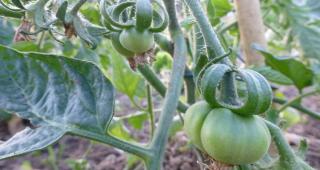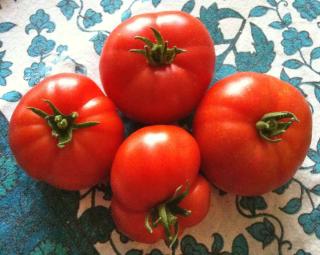

A classic in many vegetable patches, the ‘Marmande‘ tomato owes its success to its large, tasty fruits.
Vigorous and productive, it’s ideal for beginner gardeners.
The ‘Marmande’ tomato was created by the French Vilmorin seed company at the end of the 1930s. Since it doesn’t reproduce true to seed (F1 hybrid), the marmande isn’t an heirloom tomato – though the name certainly is! It’s a beefsteak-type tomato. Occasionally misspelled as ‘Maramande’.
A semi-determinate variety, it is very productive and produces large fruits that range from 7 to 14 ounces (200 to 400 g), depending on the growing environment. Its flesh is particularly tasty, lightly sweet and firm. Lastly, its resistance to the cold and its vigor make it a fabulous plant for the vegetable patch if you’re starting off in gardening.
You can prepare your seedlings starting in March. For that, you’ll have to follow a short procedure:

Caring for ‘Marmande’ tomato is pretty easy and won’t take much time. Basically, you just have to make sure the plant’s needs are met in terms of watering. For that, regular watering in moderate amounts is best, again without getting any leaves wet. In doubt, water less than more: your marmande will be much tastier.
You can also remove a few leaves when the first fruits start appearing, clearing the path for light to help them ripen faster. Don’t remove too many, though, or the plant would weaken off significantly.
As is reflected in most other tomato varieties, the main disease a ‘Marmande’ plant will have to face is downy mildew. It might also be affected by apical tomato fruit necrosis. As regards parasites, you’ll have to be on the lookout for small white winged insects called whitefly and large caterpillars of the bollworm moth, which can cause heavy damage.

To extract the most nutrients and taste, harvest your ‘Marmande’ tomatoes when you’re getting ready to prepare meals, so they’re as fresh as can be. If you can’t do so, store whatever is in excess in the bottom drawer of the refrigerator for 5 to 6 days.
Breeders in the early 1900’s realized the Marmande tomato resisted transportion very well. Where other tomatoes ended up as mush in crates, this hybrid (‘Pondorosa’ x ‘Mikado’) was still presentable for sale.

To learn more, read: